




















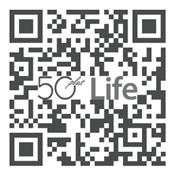
The Little Mermaid is a fairy tale written by the Danish author Hans Christian in 1837 and first published as part of a collection of stories for children.

Walt Disney’s The Little Mermaid was an animated musical fantasy originally planned in the late 1930s as one of Disney’s earliest feature films, although it was never made until 1989.
This year’s The Little Mermaid comes to us as a live-action remake. It also breaks down some long-established barriers, especially with its diverse casting.
As the star, powerhouse vocalist Halle Bailey (one-half of the R&B sister duo Chloe x Halle) debuts as Ariel, a mermaid who until now has always been portrayed as being white.
Director Rob Marshall and the scriptwriters, happy to shatter stereotypes, also seized the opportunity to better flesh out Ariel’s love: “The role of Eric in the animated film — I’m sure the original creators will agree with this — is a wooden, classic prince character with not a lot going on,” says Marshall.
“There’s a whole story that’s developed in our film. He has a very similar trajectory in a way to Ariel: He doesn’t feel like he fits in, in his world. These two kindred spirits find each other and really teach the world about prejudice and about breaking down barriers and walls between these two worlds.”
When casting Ariel for The Little Mermaid , Marshall stresses there were no well-defined agendas controlling matters.
“We just were looking for the best actor for the role … The goal was to find someone who can be passionate, beautiful, smart, and clever, and with a great deal of fire and joy.”

Naturally, top-notch vocal skills were also a primary requirement.


“That voice is something that is so signature and so ethereal and so beautiful that it captures the heart of Eric,” explains Marshall.
In Disney’s 2023 release, we are again offered the beloved story of Ariel, the beautiful and resolute young mermaid possessing both bravado and a thirst for adventure. The youngest daughter of King Triton (Javier Bardem), headstrong Ariel longs to find out more about the world beyond her familiar sea.
In doing so, she becomes smitten with the dashing human prince Eric (Jonah Hauer-King). Mermaids are forbidden to interact with humans, but Ariel chooses to follow her heart and makes a deal with the evil sea witch Ursula (Melissa McCarthy).
This gives the underwater adventurer a chance to experience life on land, but ultimately it also places Ariel’s life — and her father’s crown — in jeopardy.
The Little Mermaid opens nationwide on May 26.

CORPORATE OFFICE
P.O. Box 8049, Lancaster, PA 17604
Phone (717) 285-1350
(610) 675-6240
Fax (717) 285-1360
Email address: info@onlinepub.com
Website address: www.onlinepub.com

PRESIDENT AND PUBLISHER
Donna K. Anderson
EDITORIAL
Vice President and Managing Editor
Christianne Rupp
Editor, 50plus Publications

Megan Joyce
ART DEPARTMENT
Project Coordinator
Lauren Phillips
BUSINESS DEVELOPMENT
Senior Marketing Consultant
Joshua Binkley
Events Manager
Kimberly Shaffer
ADMINISTRATION
Business Manager
Elizabeth Duvall Member of
Jim Beamenderfer remembers how excited he was when he first started hearing rumors that Lancaster was getting a minor league baseball team.
“I always said, if it happens, I’m going after a job at the stadium. I just thought it was great that Lancaster was getting a minor league team!”
Well, it did happen in 2005, Beamenderfer did go after that job, and he’s been a proud usher at Clipper Magazine Stadium, home of the Lancaster Barnstormers, ever since.
A diehard baseball fan, Elizabethtown native Beamenderfer really became interested in the sport when he was still in high school.
“Gene Garber, who was from E-town, started pitching for the Pirates, a major league team,” he said. “I thought, ‘Here is this cool guy in the majors, and he’s from the same town that I’m from!’”
So what better part-time job could there be for a baseball fan than actually working at a ballpark, getting paid and being able to watch the games at the same time?
Beamenderfer said.
Because he worked as a radio announcer and DJ in the past, Beamenderfer has a great deal in common with the press box staff.
“I love Patsy Kline, and our DJ never plays her for me, except one night, when I was clearing the seats, he played one of her songs as a surprise, and I almost fell down the steps!”
A big benefit of working at the stadium all these years is getting to know the loyal fans who faithfully attend the games.
“We have really great fans. I enjoy talking baseball with them, although sometimes they want to talk longer than I’m able,” he said. “I do have a job to do, and although I am able to watch the game, I also have to keep an eye on the fans.”
There have been a few times when fans have suffered minor injuries, and in those cases the medical staff has been called to check on the situation. Beamenderfer said there haven’t been any security issues he’s been involved with.
“Our fans are great, really well behaved,” he said. “It’s a very family-friendly ballpark.”
Awards
50 plus Life is published by On-Line Publishers, Inc. and is distributed monthly among senior centers, retirement communities, banks, grocers, libraries and other outlets serving the senior community.
On-Line Publishers, Inc. will not knowingly accept or publish advertising which may be fraudulent or misleading in nature.

Views expressed in opinion stories, contributions, articles and letters are not necessarily the views of the publisher. The appearance of advertisements for products or services does not constitute an endorsement of the particular product or service. The publisher will not be responsible for mistakes in advertisements unless notified within five days of publication. On-Line Publishers, Inc. reserves the right to revise or reject any and all advertising. No part of this publication may be reproduced or reprinted without permission of On-Line Publishers, Inc.
We will not knowingly publish any advertisement or information not in compliance with the Federal Fair Housing Act, Pennsylvania State laws or other local laws.
Typically, Beamenderfer works April through mid-September and has a lot of flexibility in his work schedule.
“For example, if there is a seven-home-game stretch, I might work four out of the seven,” he said. “We submit our availability, and the Clipper staff are great to work with us to make it happen.”
Beamenderfer is responsible for making sure the seats in his assigned section are clean “in case the birdies fly over,” he said, while also keeping an eye on trash.
He helps people find their seats, but as the years have gone by, “we have a lot of regulars who come to the games, and they’re pretty familiar with the layout of the stadium,” Beamenderfer explained. “The stadium is really well marked.”
Although he doesn’t work in the same section each time, he has his favorite section assignments.
“I really enjoy working behind home plate because I’m close to the press box, and the guys in the press box are great, so much fun to interact with,”

Since the stadium opened in 2005, only Beamenderfer and one other gentleman have been working as ushers continuously.
“Bob and I have been here since it started,” he said. “But it can be exhausting, especially on hot nights, with all those stairs, and we’re not getting any younger! We just take it slower, but we still get the job done.”
There are many retirees working part-time jobs within the park, not only as ushers, but also as ticket takers, as parking attendants, and as part of the cleanup crew.
“We had an usher work up until he was at least 90,” Beamenderfer said. “His name was Dusty; he was a great guy. There is a banner behind section 17 honoring him.”
Not only is the stadium used for baseball, but other events are also hosted there throughout the year, and Beamenderfer has had the opportunity to work as an usher for some of those.
“I have worked some concerts, which I really enjoy because I love music,” he said. “We’ve also
had graduations, tradeshows, and band competitions. It’s just neat how the stadium is used all year as a place for the community to hold events.
“I’ve been to other independent minor league ballparks, some newer than ours, and I just don’t think they’re nearly as nice or well kept,” he said. “This is really a beautiful stadium, and it’s done a lot for the area, and I think it’s been great for the city of Lancaster.”

Although COVID put a damper on things for a while, “attendance was really good last year,” Beamenderfer said. “Of course, we had a great second half of the season, so people really came out to support the team.”
After 18 years of ushering, Beamenderfer has no plans to stop any time soon.





“I love being outside, and I love the ballpark atmosphere,” he said. “I’ll keep doing this as long as I’m able. It’s a fun place to be, it’s a great organization to work for, and the fan base is very loyal. That tells you something about the quality of the experience people have at our ballpark.”






After more than two decades appraising art, antiques, and collectibles and training my followers to identify valuables and resell for profit, I want to share some of the most successful tips that people have used to cash in on items available at estate, yard, and garage sales.
No matter where you are shopping for old items to flip, damage is always a no-no. If something is damaged, the cost of restoring it could be high.
So before you pick up and pay for that tattered 19thcentury quilt or broken lithograph tin wind-up toy, consider its condition. You’ll be glad you did.
If you decide to ignore this warning and buy a damaged piece and get it restored, make sure you know the cost of the restoration. Ask the restorer for before-and-after photos of his/her work on a similar piece. Inquire about insurance coverage while your antique is in a restorer’s care.
The treasure hunt is always exciting. When it comes to board games,

• Your focused message reaches its targeted audience.


• Multi-venue promotion — online, in print, and through social media platforms.



• Year-round distribution — annual Women’s Expos and 50 plus EXPOs, local offices of aging, and other popular venues.




toys, electronics, objects with accessories, and many more vintage and antique items, the package, box, or presentation displays for an item are valuable.
Having all of the pieces is also a vital aspect to establishing value. If you can hunt around the yard sale tables or estate sale shelves for that missing chess piece or lamp base, it will be worth it.
Ask the yard sale host if they know the location of any of the missing parts or other accessories. This simple question will help you make money as you build your collection or resell your find.
There is a longstanding myth in the art and antiques world that a piece must be signed, marked, or labeled to be valuable. This is just not true.

Sure, it is good to have documentation, signatures, marks, etc., but it is not the holy grail when it comes to identifying valuable art, antiques, or collectible objects.
While documentation — in its many forms, such as signatures, original labels, backstamps, or other marks — is important, it is not the only thing to look for when assessing a valuable item at a yard sale or estate sale.

For example, some antiques and art items were created in certain eras. For instance, most Colonial American paintings, while valuable, were not signed by the artist. It was thought that these pieces should not be signed out of respect for the sitter or person who commissioned the painting.
With certain valuable ceramics, marks were not included on some pieces.

Some of the most desirable and valuable objects in the antiques arena fall into these three categories: fine art, furniture and home décor, and precious metals, including jewelry. Don’t overlook these objects.
Ph.D. antiques appraiser, author, and award-winning media personality Dr. Lori presents antique-appraisal events nationwide and appears on History channel’s The Curse of Oak Island and Pawn Stars Do America. Visit d rloriv.com, watch her Real Bargains show to find valuables at bargain prices on youtube.com/drloriv, or call (888) 431-1010.


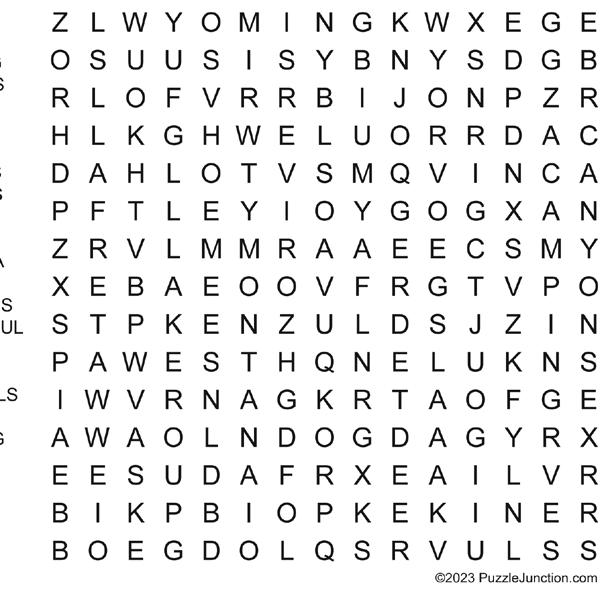










Listings with a screened background have additional information about their services in a display advertisement in this edition. This is not an all-inclusive list of agencies and providers. These advertisers are eager to provide additional information about their services.
BETHANy VILLAgE – THE OAk S 325 Wesley Drive • Mechanicsburg, PA 17055 717-766-0279 • www.bethanyvillage.org

Number of Beds: 69
Skilled Licensed Nursing: Yes
Therapy: Speech, Occupational, Physical Rehabilitation Unit: Yes
Short-Term Care: Yes
Long-Term Care: Yes
Alzheimer’s Unit: Yes
Private Rooms: Yes
Semi-Private Rooms: Yes
24-Hour Medical Care: Yes
Security System: Yes
Staff Background Checks: Yes
Internet Access: Yes
Recreational Activities: Yes
Scheduled Entertainment: Yes
Medicare: Yes Medicaid: Yes
Accreditations/Affiliations: CARF, Eagle, LeadingAge PA
Comments: Maplewood Assisted Living also available.
1901 North Fifth Street • Harrisburg, PA 17102-1598 717-221-7902 • www.homelandcenter.org
Number of Beds: 120
Skilled Licensed Nursing: Yes
Therapy: Speech, Occupational, Physical Rehabilitation Unit: No
Short-Term Care: Yes
Long-Term Care: Yes
Alzheimer’s Unit: No
Private Rooms: Yes
Semi-Private Rooms: Yes
24-Hour Medical Care: Yes
EPHRATA MANOR 99 Bethany Road • Ephrata, PA 17522 717-738-4940 • ucc-homes.org
Security System: Yes
Staff Background Checks: Yes
Internet Access: Yes
Recreational Activities: Yes
Scheduled Entertainment: Yes
Medicare: Yes Medicaid: Yes
L ANCASTER REHABILITATION HOSPITAL 675 Good Drive • Lancaster, PA 17601 717-406-3000 • www.lancasterrehabhospital.com

Number of Beds: 95
Skilled Licensed Nursing: Yes
Therapy: Speech, Occupational, Physical Rehabilitation: Yes
Short-Term Care: Yes
Long-Term Care: Yes
Alzheimer’s Unit: Yes
Private Rooms: Yes
Semi-Private Rooms: Yes
24-Hour Medical Care: Yes
Security System: Yes
Staff Background Checks: Yes
Internet Access: Yes
Recreational Activities: Yes
Scheduled Entertainment: Yes
Medicare: Yes Medicaid: Yes
Accreditations/Affiliations: AAHSA, Leading Age of PA, NHPCO, PHPCN, PHA, HPNA, CAPC

Comments: A beautiful, full-service continuing care retirement community with a history of over 155 years of exemplary care.

PLEASANT ACRES REHABILITATION AND NURSINg CENTER

118 Pleasant Acres Road • York, PA 17402 717-840-7153 • www.pleasantacresnursing.com
Number of Beds: 59
Skilled Licensed Nursing: No
Therapy: Speech, Occupational, Respiratory, Physical Rehabilitation Unit: Yes
Short-Term Care: Yes
Long-Term Care: No
Alzheimer’s Unit: No
Private Rooms: Yes
Semi-Private Rooms: No
24-Hour Medical Care: Yes
Security System: Yes
Staff Background Checks: Yes
Internet Access: Yes
Recreational Activities: No
Scheduled Entertainment: No
Medicare: Yes Medicaid: Yes
Comments: Acute inpatient rehab hospital offering intense rehabilitation to get you home sooner and safer.
STONERIDgE RETIREMENT LIVINg COMMUNITIES

440 East Lincoln Avenue • Myerstown, PA 17067 717-866-3200 • www.stoneridgeretirement.com
Number of Beds: 375
Skilled Licensed Nursing: Yes
Therapy: Speech, Occupational, Respiratory, Physical Rehabilitation Unit: Yes
Short-Term Care: Yes
Long-Term Care: Yes
Alzheimer’s Unit: Yes
Private Rooms: Yes
Semi-Private Rooms: Yes
24-Hour Medical Care: Yes
Security System: Yes
Staff Background Checks: Yes
Internet Access: Yes
Recreational Activities: Yes
Scheduled Entertainment: Yes
Medicare: Yes Medicaid: Yes
Comments: For short-term surgical recovery or long-term rehabilitation, we are here for all of your healthcare needs!
Number of Beds: 321
Skilled Licensed Nursing: Yes
Therapy: Speech, Occupational, Physical Rehabilitation Unit: Yes
Short-Term Care: Yes
Long-Term Care: Yes
Alzheimer’s Unit: No
Private Rooms: Yes
Semi-Private Rooms: Yes
24-Hour Medical Care: Yes
Security System: Yes
Staff Background Checks: Yes
Internet Access: Yes
Recreational Activities: Yes
Scheduled Entertainment: Yes
Medicare: Yes Medicaid: Yes
Accreditations/Affiliations: LeadingAge PA, PADONA
Comments: Mission driven, full-service continuing care retirement community with a history of almost a century of exemplary care.
If you would like to be featured on this important page, please contact your marketing consultant or call (717) 285-1350.
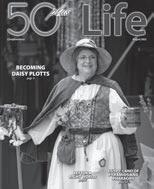
Dear Savvy Senior, Can you recommend any good online hearing tests? My husband has hearing loss, but I can’t get him to go in and get his hearing checked, so I thought a simple online test could help him recognize he has a problem. What can you tell me?
– Loud-Talking Linda
Dear Linda, There is actually a growing number of very good online and app-based hearing tests available that will let your husband check his hearing on his own.
These tests are a quick and convenient option for the millions of Americans that have mild to moderate hearing loss but often ignore it or don’t want to visit an audiologist for a hearing exam.
Hearing loss for most people develops gradually over many years of wear and tear, which is the reason many people don’t realize they actually have a hearing problem.
Anyone who has difficulty hearing or understanding what people say, especially in noisier environments or over the phone, should be tested. Or, anyone who needs a higher volume of music or TV than other people should take a few minutes to test their hearing.
Online and app-based hearing tests can serve as a great screening tool. They are not meant to be a diagnosis, but rather to give you an idea of how bad your hearing loss is and what can be done about it.
For most do-it-yourself hearing tests, you’ll be advised to wear ear headphones or earbuds and sit in a quiet spot.
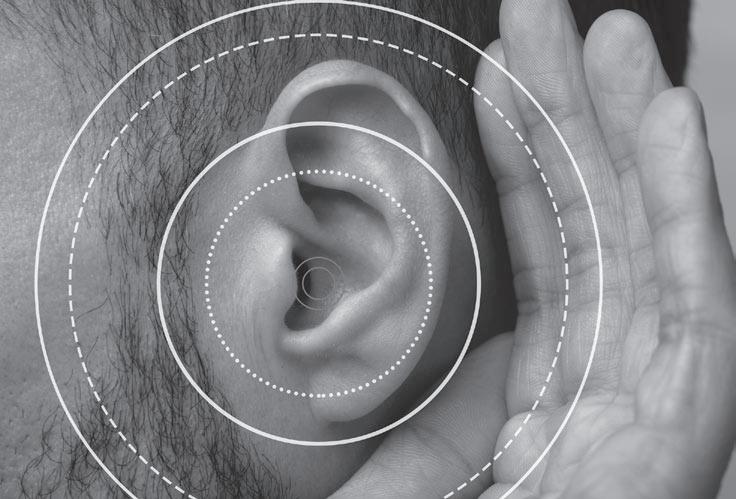
You also need to know there are two different types of tests available. One type is known as pure-tone testing, where tones are played in decreasing volumes to determine your specific level of hearing loss.

And the other type is known as speech-in-noise or digits-in-noise (DIN), where you’ll be asked to identify words, numbers, or phrases amid background noise.
If your husband uses a smartphone or tablet, two of my favorite appbased hearing tests are the hearWHO app, created by the World Health Organization, and the Mimi Hearing Test app. Both apps are free to use and
are available through the App Store and Google Play.
HearWHO allows users to check their hearing status and monitor it over time using a DIN test, while Mimi uses pure-tone and maskedthreshold tests to give you a detailed picture of your hearing abilities.
There are also a wide variety of online hearing tests your husband can take on a computer.
A quick internet search will yield multiple options for free online DIN and pure-tone hearing tests. Many are offered by hearing aid manufacturers, such as Oticon (oticon.com/yourhearing/online-hearing-test).
All of these hearing tests are completely free to use and take less than five minutes to complete.
If the tests indicate your husband has hearing loss, it’s best to think of that as a starting point. He should take results to his doctor or an audiologist for further evaluation.
Many insurance providers and Medicare Advantage plans cover routine hearing exams; however, Original Medicare does not.
Send your senior questions to: Savvy Senior, P.O. Box 5443, Norman, OK 73070, or visit SavvySenior.org. Jim Miller is a contributor to the NBC Today show and author of The Savvy Senior book.

road of life contains more than a few curves … … and confident decisions are informed decisions.
Do you ask people to repeat what they are saying? Do you need to turn the TV volume so loud that others complain? Do you need help understanding speech because of background noise or think that others mumble?
You are not alone, as hearing loss ranks one of the most common chronic health conditions adults experience. Statistics indicate that approximately 1 in 3 people between the ages of 65 and 74 has hearing loss, and nearly half of those older than 75 have difficulty hearing.
The essential communication components of sensing, interpreting, and responding to people and things in their environment can be challenging for these individuals.
Better Speech and Hearing Month is observed in May annually to heighten awareness about communication disorders and hearing health. This day was founded by the American Speech-Language-Hearing Association (ASHA) to “promote understanding of speech and hearing disorders, prevent hearing loss, and encourage people to seek treatment for hearing and speechrelated issues.”
Age-related hearing loss, called presbycusis, is the hearing loss that gradually occurs in many of us as we age. This hearing loss usually occurs in both ears, and you may not even realize you have lost some hearing ability because it happens slowly.
It may be difficult to distinguish age-related hearing loss from hearing loss that occurs for other reasons, such as long-term noise exposure or a short blast, such as a gunshot.
Highly audible noise is the most common cause of hearing loss. Noise from snow blowers or lawnmowers can damage the inner ear, resulting in permanent hearing loss.
Jobs such as farming, construction, or factory work, where loud noise is routine, can lead to damage inside your ear, as can recreational activities with dangerously high noise levels, like snowmobiling, carpentry, motorcycling, or loud music. This type of noise also contributes to tinnitus.
This noise exposure can damage the 16,000 sensory hair cells within their inner ear. Once hair cells are damaged, they do not grow back, and your hearing ability diminishes. Loud noise damages the auditory nerve that carries information about sounds to your brain.
You can prevent most noise-related hearing loss by reducing the sound level on your devices, using earplugs or other ear protection, or avoiding loud noise.
Conditions prevalent in older people, like high blood pressure or diabetes, can be a factor in hearing loss. Medications toxic to the sensory cells in your ears, such as some chemotherapy drugs, can also cause hearing loss. Temporary effects on your hearing, such as tinnitus or hearing loss, can occur if you take high doses of aspirin, antimalarial drugs, or diuretics.

Tinnitus is also widespread in older people. It is described as ringing in the ears but can also sound like roaring or buzzing. It may not be constant, and loud or soft ringing can be in one or both ears. Tinnitus is often the first sign of hearing loss in older adults. Most older people who experience hearing loss have a combination of agerelated and noise-induced hearing loss.
Hearing loss has a significant effect on your quality of life. Having trouble hearing can make it challenging to comprehend and follow a doctor’s advice, respond to warnings, and hear doorbells and alarms. Because hearing loss makes conversation difficult, some people experience feelings of isolation, often leading to depression.
Research shows that hearing loss is linked with cognitive impairment and decline. Studies indicate that older adults with hearing loss have a greater risk of dementia than those with normal hearing. With hearing loss, memory and concentration decline more quickly.
A recent analysis determined that people who used hearing therapeutic devices, such as hearing aids, had a lower risk of long-term cognitive decline than those with uncorrected hearing loss.
If you already have hearing loss or are experiencing pain or ringing in the ears, take steps to keep it from worsening. Research on the interaction between hearing loss, cognitive impairment, depression, and isolation is ongoing, but results suggest that treating hearing loss can positively affect cognitive performance, especially memory.
If you have a hearing problem, the most important thing you can do is seek professional advice. Your doctor may be able to diagnose and treat you, or they may refer you to other experts, like an otolaryngologist; ear, nose, and throat doctor (ENT); or an audiologist, a health professional who can identify and measure hearing loss.

Antiques expert, TV personality, and longtime 50 plus Life columnist Dr. Lori will be appearing at the Dauphin County Women’s Expo on Saturday, June 3, at the Hershey Lodge.

Dr. Lori will host her “Antiques Appraisal Comedy Show” from 11 a.m. to 1 p.m. on the expo stage.

Guests are encouraged to bring their antiques and thrift-shop finds for an appraisal. Dr. Lori will also share tips on how to sell your vintage objects for profit.
Dr. Lori is the star antiques appraiser on History channel’s The Curse of Oak Island and Pawn Stars and Discovery channel’s Auction Kings, and she appears on FOX Business Network’s Strange Inheritance.
An award-winning TV personality and TV talk show host, Dr. Lori has a Ph.D. in art history from the Pennsylvania State University.
She reviews approximately 20,000 items annually, presenting at more than 150 events every year and conducting in-home appraisal visits. She is the director of DrLoriV.com.
Dr. Lori has shared her expertise with Business Insider, NBC’s TODAY show, The Bobby Bones Show, Anderson LIVE , Comedy Central’s The Daily Show with Jon Stewart, NBC’s The Tonight Show, Inside Edition, Newsweek, People, and Lifetime Television, for which she has contributed a blog.
She has served as an editor of several lifestyle magazines and is an internationally syndicated columnist — her Art and Antiques column has run in 50 plus Life for more than 15 years — as well as an author with 30 books to her credit.
Dr. Lori is a graduate of the University of Michigan at Ann Arbor and Wesleyan University.
She has served on the faculty at Penn State University, State University of New York, Pennsylvania Academy of the Fine Arts, Albertus Magnus College, Arcadia University, Southern Connecticut State University, and Muhlenberg College.
Dr. Lori has held museum positions at the Yale University Art Gallery, the Allentown Art Museum, Muhlenberg College, and the Palmer Museum of Art at Penn State University.
Brought to you by OLP Events, the 10th annual Dauphin County Women’s Expo will be open 9 a.m. to 2 p.m. on June 3 at the Hershey Lodge, 325 University Drive, Hershey.
Admission and parking are free. For more information, visit agreatwaytospendmyday.com, call (717) 285-1350, or email info@ onlinepub.com.

TV personality and award-winning sommelier

Laurie Forster will share her passion for food and wine. Using her down-to-earth approach to “wine education,” Laurie will demystify the wine industry and explain which foods pair best with each wine. Beef and wine samples will be served immediately following. Laurie will sign copies of her book, e Sipping Point A Crash Course in Wine
Sponsored by the PA Beef Council
Bring your antiques and vintage thrift shop finds for an expert appraisal by Dr. Lori, star appraiser from the the History channel’s e Curse of Oak Island and Pawn Stars Do America. No standing in line! Plus, Dr. Lori shares tips on how to sell your stuff for profit. Dr. Lori’s YouTube channel @DrLoriV has over 32 million views, and she reviews approximately 20,000 objects a year.








We were thrilled to be back in person for the 24th annual Dauphin County 50 plus EXPO on April 11 at the Hershey Lodge! Did you join us? If so, you might find yourself here! If not, see what you missed — and please, join us next time!







Lynn, MSW, LSW Outpatient Social Worker
Legacy. While its formal definition is that of “a gift by will, especially of money or other personal property,” we know it to hold much greater depth of meaning.
Our legacy is the intangible part of us we leave behind when we take our last breath on this earth. It is the words spoken at a memorial. It is the memories that draw tears from those who loved us.
Men speak often about legacy. Sports stars, business icons, millionaire philanthropists — these are the pictures invoked when we conjure up images of people with legacies.
But I’ve known countless women, especially those with children, who — when speaking about their legacies — refer first to motherhood. When asked their greatest accomplishment, it is unequivocally: “my children.”
Where does that leave those of us who have no choice but to stand outside, watching motherhood from afar through the windowpanes of life? How can we best construe what our legacy might be?
For me, being childless forced me to redefine who I was as a person and what I wanted to leave behind on this earth. I believe whether we have children or not, it’s a helpful exercise to be intentional about our legacy.
Here are a few tips from my 3E Method of Change© for those looking for inspiration to do just that.
We all have dusty boxes hidden in the corner of our minds. From painful memories to joys we gave up on, they are all pieces of who we are and how we see the world.
To build my legacy, I started by unpacking all those boxes and really thinking intentionally about what I wanted to keep and what I was ready to discard.
What pain can you heal, forgive, and release from your attic? What joy can you revisit and bring back into your life? We must get clear on our own personal values. What are we carrying that never truly felt right? Who are we
outside of long-held familial and societal expectations?
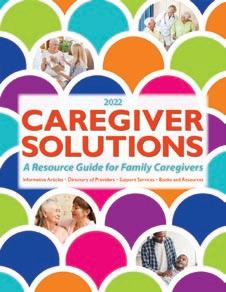
Answering these questions is the first step to truly knowing the pieces of the legacy that already exist and what you still need to build.
Second, to make space for change, we must eliminate obligations that no longer serve us.
When I prepared to move across the country, I realized just how many commitments I was holding, sitting on eight nonprofit boards, teaching two college classes, and working a full-time job.
I never realized how many times I kept saying yes without ever trading one obligation for another. They just slowly mounted, and I was exhausted. And this was not just a detriment to me, but also to my legacy.
We all have a threshold of effort where we can give our whole selves authentically. After that point, our efforts start to diminish, leaving less of our best selves for the organizations and people we serve.

If we want to live the most robust life of our choosing, we must make the space to be our best selves at every turn. For many of us, that means gracefully declining invitations when rest is needed, stepping out of commitments that do not properly align with our ultimate goals, and finding ways to remove challenges that unnecessarily steal our time.
Finally, once you decide what you believe is your legacy, you must be steadfast to stay on and protect that path. That means making every decision about your time and talents through the lens of “this gets me closer” or “this detracts from my plan.”
Over time, I have become resolute that my legacy is built on service to others and experiencing the world in its entirety. This is how I want to prove to myself and the world that I can make an impact without being a parent.
Travel has proven to be a priceless commodity in developing who I am as a human, teaching me culture and traditions, vulnerability and openheartedness, creativity and solitude. I have been privileged to witness the best of humanity and the evil remnants of the worst.
And it has allowed me to give my time and human capital for the benefit of others around the world. This is the legacy I choose to leave.
From those of us who cannot claim motherhood on our life scorecards, there is only us. Whatever we want to give to this world has to come from us. Every choice we make defines the legacy we leave behind. So, make it grand. Make it bold. Make it yours.
Education, nonprofit, and workplace expert Melanie Sue Hicks, author of Incongruent : Travel, Trauma, Transformation, is an adventure-seeking social-impact advocate who has led or participated in more than 50 service projects in 20 cities and four international locations. Hicks has been published in and interviewed for more than two dozen magazines and websites. melaniehicks.org

Tulip trees and sweet gum trees are attractive, native species that dominate much of the Southern Coastal Plain of extreme southeastern Pennsylvania to Georgia.
These deciduous trees are also commonly planted on lawns in southeastern Pennsylvania because of their beauties at different times of year and the shade they cast. And both these lovely trees feed different species of wildlife.

Common in southeastern Pennsylvania, tulip trees grow tall, straight trunks and uniquely shaped leaves that resemble headless birds in flight.
Each leaf has two “wings”; a broad, forked “tail”; and a long, thin “neck,” the petiole. Those leaves turn yellow in autumn when they die and their green chlorophyll fades.
Tulip tree foliage helps brighten many woods in fall.
Tulip trees’ flowers bloom in the middle of May, and each lovely, 2-inch blossom is shaped like a tulip. Each flower petal is light green with an orange base. Those bases together create a ring of orange on the bottom of each blossom. A variety of flies, bees, and other insects sip nectar from tulip tree blooms, pollinating them in the process.
The many resulting dull-brown seeds of each fertilized flower grow on a pointed, 2-inch spike. Each seed has a thick part that houses the embryo and a flat, thin blade that spins the seed away on the wind and across the countryside.

Mice, squirrels, and chipmunks ingest many tulip tree seeds lying on the ground. And squirrels consume many others still attached to their spikes in the trees.
Each unique sweet gum leaf has five points that make it look like a star. In October, those leaves become a striking red, yellow, or maroon, all those bright colors on each beautiful tree.
Each sweet gum tree produces many round, dull-brown seed balls that are about an inch across. Each ball is covered with holes where the tiny, dark seeds sprinkle out when mature and soft bristles that protect those cavities. Many of


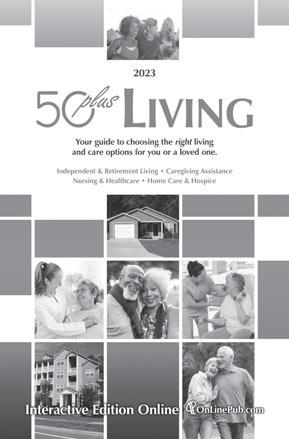
the seeds that fall out of the balls blow away on the wind.

But many other seeds are eaten by a variety of attractive finches and sparrows during winter. Those small birds pick the seeds out of the balls, whether they are attached to their twig moorings or lying on the ground. And those birds also pick up seeds that blew around in the wind and finally settled on the ground.






Either way, those birds add their beauties to that of sweet gums and the habitats those trees grow in.

Sweet gums are getting better established in southeastern Pennsylvania. Seeds from planted sweet gums sprout and grow in abandoned fields and along rural roadsides.
Tulip trees and sweet gums are beautiful trees that are commonly planted on southeastern Pennsylvania lawns because of their beauties and the shade they provide. And these trees feed certain kinds of wildlife, both in woods and on lawns.


Effectively managing your blood pressure can help reduce your chances of lifethreatening medical events, even death. Gain confidence and learn how to take control of your blood pressure with these tips and resources from the American Heart Association.
High blood pressure is often referred to as the “silent killer” because it typically has few, if any, noticeable symptoms but can lead to heart attack, stroke, heart failure, and even death.
Many people with high blood pressure don’t even know they have it. Some overlooked symptoms can include dizziness, facial flushing, and blood spots in the eyes.
The only way to know if you have high blood pressure is to regularly take an accurate blood pressure measurement. Understanding your results is key to controlling high blood pressure.

Blood pressure numbers of less than 120/80 mm Hg are usually considered within the normal range, yet it is important to talk to a doctor about your healthy range. Even if you fall within a healthy range, it can be beneficial to stick with hearthealthy habits like following a balanced diet and getting regular exercise.
While many risk factors for high blood pressure may
be related to your age, gender, and family history, there are also risk factors you can change to help prevent and manage high blood pressure.
People at added risk may be those who engage in lower levels of physical activity, eat a diet high in sodium (particularly from packaged, processed foods), may be overweight or obese, drink excessive amounts of alcohol, and may have multiple chronic conditions.
Whether you’re making changes in your own life to combat high blood pressure or helping someone else, positive feelings and confidence are longer-term motivators to making health changes.
If you’re talking with friends, loved ones, or your doctor, be prepared to ask openended questions. Be curious and kind to yourself and others you may be helping.
You can reduce your risk of heart disease, stroke, heart failure, and even death with lifestyle changes and medication.
Watching your weight, especially if you are overweight or obese, can bring health gains; losing as little as 5-10 pounds may help lower your blood pressure.
Managing your stress by relaxing for short periods during your workday, at night, and on weekends is another productive practice.
If you have diabetes, it’s important to work with a doctor to manage the disease and reduce your blood glucose levels.
If you think you could have sleep apnea, getting screened for and treating the condition can also reduce your risk for developing high blood pressure.
200 words or fewer and photos are encouraged.

When you have high blood pressure, medication may be an important part of your treatment. Follow the recommendations carefully, even if it means taking medication every day for the rest of your life.
When you’re discussing high blood pressure concerns with your healthcare provider, also be sure to talk to your doctor about over-the-counter pain relievers that may raise your blood pressure so you’re not creating a blood pressure problem while treating other concerns.
Learn more about monitoring and managing high blood pressure at heart. org/bptools. (Family Features)

This is not an all-inclusive list of agencies and providers. These advertisers are eager to provide additional information about their services.
Estate planning, elder law, asset protection planning, Medicaid planning, crisis Medicaid planning, special needs planning, and lifecare planning.

Estate planning, wills, trusts, powers of attorney, living wills/advanced healthcare directives, estate administration, guardianship, Medicaid planning, crisis Medicaid planning, veteran benefits, and special needs planning.
Serving all of Pennsylvania in person, virtually, or via phone. Offers estate planning “peace of mind” package that includes the three critical documents (simple will, durable power of attorney, and living will/healthcare directive) for only $200/person. mooney
Trust, Medicaid planning, asset protection planning, streamlined probate planning, probate and trust administration, and guardianships.
Estate planning, wills, financial powers of attorney, durable healthcare powers of attorney (living wills), guardianships, Medicaid planning, and estate administration. Offices in Lancaster, Columbia, Elizabethtown, and Quarryville. If you would like to be featured on this important page, please contact your marketing consultant or call (717) 285-1350. * Indicates that at least one attorney in the firm is a member. Information contained herein was provided by the firm.
Playing with small, round balls may have started with cave people. Clay balls have been found in the tombs of Egypt, in Native American burial grounds, and in the ancient Aztec pyramids.
Smooth stones, nuts, fruit pits, and fired balls of clay were used for games. In the 1700s the globes were made of white alabaster, a marble stone — hence the name “marbles.”
Hand-blown glass marbles were made in Germany between the 1860s and 1920s. A “glass marble scissors” had been patented to cut the ball of molten glass, thus creating small globes.
In the heating of the glass, the form was rolled in colored sand, creating the patterns in the marbles. Swirl-design marbles were made into the 1920s. The German glass-blowing companies closed after World War I.
Machine-made marbles were created in America during the 1920-1940s. The Christensen Agate Company of Akron, Ohio, produced a machine where hot glass was dropped onto steel rollers to shape the glass into smooth marbles.
Recognized names like Akro Agate, Peltier Glass, and Master Made Marbles made marbles of baked clay, glass, steel, plastic, onyx, and agate. By the 1940s, the Catseye, produced in Japan, became the most popular marble of our era.

Today, Vacor de Mexico is the largest maker of machine-made marbles, producing over 90% of the world’s supply.

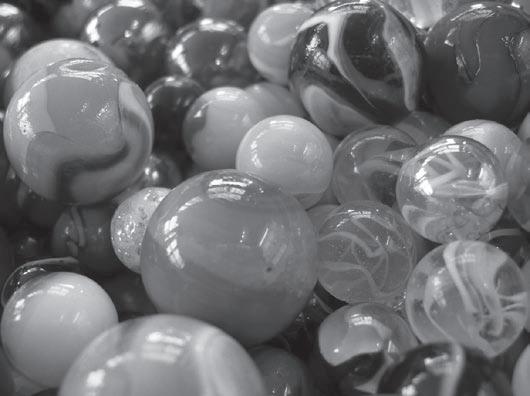
The individual marble names may relate to their use, such as the “shooter.” Others are named for the material they are made of, such as “Steelies” from steel and “Alleys” from alabaster. Flints, Cloudies, Corkscrews, and Peerless Patches refer to the appearance.
Other names include China, Aggie, Commie, End of Day, Bennington, Onion Skin, Mica, Bamboozer, Popeyes, Sparklers, and Moonies.
The standard marble is a half-inch in diameter. These small marbles are called “ducks” or “mibs.” They are the marbles that players try to knock out of the ring drawn on the ground. The large marble, called the “shooter” or “taw,” is generally three-quarters of an inch in diameter and is used for shooting the “mibs.”
There are hundreds of variations of marble games. The classic game, ring taw, or ringer, was the most popular game in the United States. A 3-foot ring is drawn on the ground with 10-15 small marbles (mibs) placed within it. Players
please see MARBLES on facing page



We are looking for central Pennsylvanians over age 50 who have a unique hobby, passion, or history of volunteer work, or who are a part of an interesting local club.

Ideal story candidates are willing to talk about themselves and to be photographed.
Your name: _______________________________________________________________
Your address: ____________________________________________________________________
Your phone: ________________________________________ Email:_____________________________________________
Nominee’s name (if not self): ____________________________________________________________________________
Nominee’s town of residence: ___________________________________________________________________________
Nominee’s phone: __________________________________ Email: _____________________________________________
Why they would make a great story: _____________________________________________________________________
Q. How important is exercise when you are a senior? Is it worth the risks of hurting yourself?
All the current scientific evidence shows that geezers should exercise, even though many older people think it could harm them. Study after study demonstrates that older adults hurt their health a lot more by being sedentary.
If you’re inactive, you deteriorate. Physical activity can help restore your capacity. Most older adults, regardless of age or condition, will benefit from increasing physical activity to a moderate level.
Warning: If you want to begin a new exercise program, you should consult your physician and request a list of exercises that are best for your age and physical condition.

Four types of exercise are important for your health. These are exercises for strength, balance, stretching, and endurance.
Strength exercises build muscle and raise your metabolism. Doing these exercises will help to keep your weight down.
Balance exercises help prevent falls and, therefore, will keep you from breaking yourself and losing your independence. Each year, U.S. hospitals have 300,000 admissions for broken hips; many of them are the result of falls.
Stretching exercises give you more freedom of movement. And endurance exercises raise your pulse and breathing.
Here are 10 tips to make any exercise program safe:
1. Don’t hold your breath during strength exercises. This could affect your blood pressure.
2. When lifting weights, use smooth, steady movements. Breathe out as you lift or push a weight, and breathe in as you relax.
3. Avoid jerking or thrusting movements.
4. Avoid locking the joints of your arms and legs into a strained position.
MARBLES from facing page
take turns attempting to knock them out of the ring from outside the circle.
In advance, players agree to play “for fair,” which means every player keeps their marbles. Or to add excitement and drama, many play “keepsies” (for keeps), where the player who knocks all the marbles out of the ring gets to keep all the marbles.
If the shooter does not knock a marble out of the ring, it remains in the circle. If a player then knocks your shooter out of the circle, they instantly win. If this does not happen, the player shoots from within the ring on their next play.
Marbles were very popular until World War II. The game waned as kids were drawn to TV (Saturday morning cartoons), followed by video gaming. A
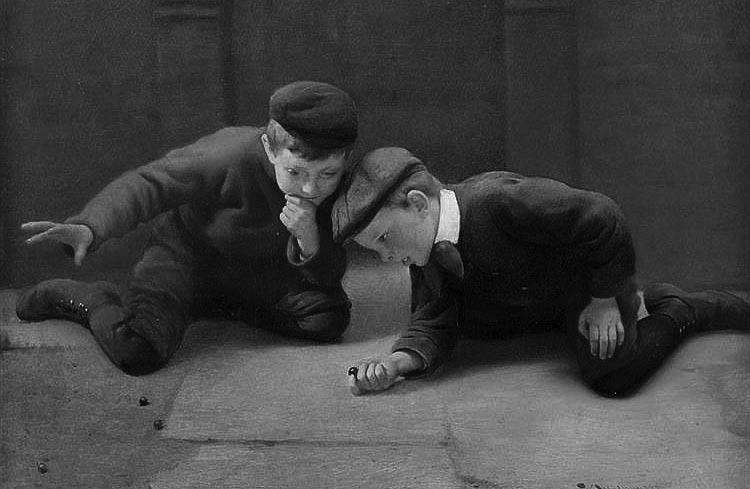
5. Some soreness and slight fatigue are normal after muscle-building exercises. Exhaustion, sore joints, and painful muscle pulls are not normal.
6. Always warm up before stretching exercises.
7. Stretching should never cause pain, especially joint pain.
8. Never bounce into a stretch; make slow, steady movements instead.

9. To prevent injuries, use safety equipment such as helmets for biking.
10. You should be able to talk during endurance exercises.
Measuring your progress can motivate you. Test yourself before starting to exercise to get a baseline score. Test and record your scores each month. The following are some tests you can use, if your doctor approves.
• For endurance, see how far you can walk in exactly six minutes.
• For lower-body strength, time yourself as you walk up a flight of stairs as fast as you can safely.
• For upper-body strength, record how much weight you lift and how many times you lift that weight.
• For balance, time yourself as you stand on one foot, without support, for as long as possible. Have someone stand near you in case you lose your balance. Repeat the test while standing on the other foot.
Remember, above all, exercise should make you feel better.
Fred Cicetti is a senior and health writer with more than three decades of experience. The Healthy Geezer is devoted to the health questions of seniors who are wondering what is going on with these bodies of ours.
resurgence in the 1970s revived the game, or at least marble collecting, with large-scale collector competitions.
Several YouTube videos have good discussions of marble values that vary by type, production method, and age. A single marble can be priced from $1 to $100. You must know your marbles.
Marbles are now a nostalgic memory of the past. Few play today.
Doris Montag is a homespun historian and an exhibit curator who researches and displays historical collections of ordinary things, such as can openers, crochet, toy sewing machines, hand corn planters, powder compacts, egg cartons, and more. Contact or follow her on Facebook, HistoryofOrdinaryThings.
“Dear loved ones ...”
That’s a good start to a long story, isn’t it? Those three words leave a lot of space for family tales and sharing the awkward, funny, happy, horrible things that you remember.
But though there’s room for questions, answers, and emotions, you write “Dear loved ones ...” and you’re stalled. So now what? In Yours Truly by James R. Hagerty, it’s time to pick up a pen. What will people say about you when you’re gone?

If you’re rich, famous, powerful, or important, you probably don’t need to worry. Someone like Hagerty, who creates obituaries for a living, will do a quick internet search and write a few glowing words about you.
Yours Truly: An Obituary Writer’s Guide to Telling Your Story
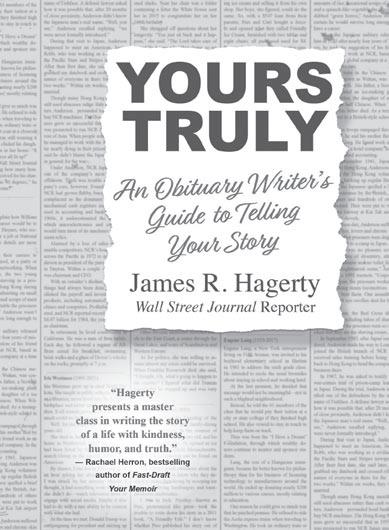 By James R. Hagerty c. 2023, Citadel Press 224 pages
By James R. Hagerty c. 2023, Citadel Press 224 pages
But if you’re like most folks, one of your grieving relatives will dash off an obit that — well, let’s face it: It’ll be boring.
You can do something about that now, though. You can write your own story.
An obituary, Hagerty says, can be short or long. You don’t have to follow a template or formula, you can use humor in it, and you can write it now.
To begin, ask yourself three questions: What have you been trying to accomplish with your life? Why? And how did that work for you?
If you’re not used to doing so, Hagerty says to set a small amount of time aside for writing, maybe 15 minutes a day. Keep a notebook handy for things that pop into your head, and jot them down. If writing seems like a burden, record your words digitally, but don’t try to do it all at once or you’ll burn out and miss some recollections.


Include your date of birth, siblings’ names, what your parents did for their livings, your early hobbies, how you met your spouse, military service, things you hated to do, and all the stories you loved to tell throughout your life.
Give details but don’t boast. Ask the deep questions. And finally, be brave and include embarrassments.
Says Hagerty, “Admit that things didn’t always go as you had planned.”
Chances are that most people will pick up Yours Truly as a sort of primer on leaving a life’s legacy to children and grandchildren, which is good. That’s how this book is intended.

But while you’re learning how to preserve your stories and write your own obituary, Hagerty gives you something else to do, too: He’ll entertain you with dozens and dozens of obits from (above-) average people.



Don’t be surprised, in fact, if you somehow forget about penning your story while you’re reading about the lives of everyday people like you. Those folks lived their best lives unremarkably, and though their tales aren’t earthshattering, they come in waves of irresistibility.
Hagerty hints that the everyman tales are here to serve as examples, and you should take them as such.
You should also take them to a comfortable chair, along with a pen and paper or a recording device. Read Yours Truly for yourself. Do it for the ones you love dearly.
The Bookworm is Terri Schlichenmeyer. Terri has been reading since she was 3 years old, and she never goes anywhere without a book. She lives on a hill in Wisconsin with two dogs and 14,000 books.

Even before he became a successful and respected musician, Gerry Rafferty had developed a loathing for the oftenunderhanded machinations of the pop-music industry.
He was born in 1947 in Paisley, Scotland, a town that borders Glasgow, Scotland’s largest city. Rafferty came from a workingclass family, where his mother taught him Scottish and Irish folk songs. As he grew into his teens, he became influenced by the music of the Beatles and Bob Dylan.

His father was a hot-tempered alcoholic who died in 1963, when Rafferty was 16. That year, young Rafferty left school to work in a butcher store and a shoe shop, although deep down he wanted only to earn a living by making music.
On weekends, he and best pal Joe Egan played in a local rock band called the Maverix, primarily offering up covers of Beatles and Stones hits. Rafferty later joined a folk-pop group called the Humblebums, which included future comic star Billy Connolly. The Humblebums cut a pair of albums for Transatlantic Records, which received critical appreciation but sold poorly.
in 1973.
“Stuck in the Middle with You”
By Stealers Wheel May 1973When the Humblebums disbanded in 1971, Rafferty continued with Transatlantic as a solo performer and recorded his first album, Can I Have My Money Back? His creation received enthusiastic praise but was ignored by the record-buying public.
In 1972, he and Egan reunited, this time to form a soft-rock outfit called Stealers Wheel. They promptly struck gold with “Stuck in the Middle with You,” which became a Top 10 single in America, the U.K., and Canada. That hit 45 gave Rafferty a chance to vent his spleen against the negative forces that controlled the music business.

In a voice that mimicked his idol Bob Dylan, Rafferty set the scene for his tune at a record-company party that made him uncomfortable being in the midst of the power people he always preferred to avoid:
Well, I don’t know why I came here tonight I got the feeling that something ain’t right Rafferty just wanted to make music, revel in the satisfaction of its creation, and ignore that part of the picture that included insensitive bean-counters and “friends” who were supposedly furthering his career:

Clowns to the left of me, jokers to the right Here I am, stuck in the middle with you
He found his frustrations maddening:
Trying to make some sense of it all


But I can see that it makes no sense at all Is it cool to go to sleep on the floor?
’Cause I don’t think that I can take anymore
Stealers Wheel cut a trio of albums, but by the time the first one was issued, Rafferty had already left the outfit. Stealers Wheel officially disbanded in 1975, and for three years Rafferty’s creative hands were tied by legal hassles that prevented him from releasing new material.
In 1978, his 6-million-selling LP City to City featured his signature song, the worldwide hit “Baker Street.” As a result, his success brought Rafferty financial independence — thanks, ironically, to the industry that he despised.
In the year following a stroke, about 1 in 3 stroke survivors will experience spasticity, a common post-stroke condition that causes muscle stiffness due to involuntary muscle contractions.
Most commonly affecting the elbow, wrist, and ankle, the condition may make it difficult to do activities people were able to do before their stroke like dressing, brushing their teeth, or walking.
More than 3 million stroke survivors may wrestle with reduced independence and increased reliance on caregivers due to spasticity. The condition is particularly common in younger stroke survivors.

After a stroke, the way your brain communicates with your muscles may change. Muscles may be stiff or resistant to stretching. They may involuntarily contract or have a smaller range of motion.
“While there’s no cure for spasticity, working with your care team to find the best treatment options for you can help provide comfort, relief, and independence,” said Richard D. Zorowitz, MD, volunteer past chair of the American Heart Association’s Stroke Council Rehabilitation and Recovery Committee and chief medical informatics officer and outpatient attending physician at MedStar National Rehabilitation Network.
Some common symptoms include painful muscle spasms; difficulty stretching muscles; stiffness in the arm, hand, leg, and ankle; an arm
folded and pressed against the chest with a curled wrist and fingers; an involuntary tight fist; pointed foot; curled toes; and overactive reflexes.
If left untreated, spasticity can cause painful and debilitating bone and joint deformities. Experts stress seeing a doctor as soon as symptoms develop. Assessment of the condition is critical in developing a treatment plan based on individual needs and goals, the severity of the condition, and overall health.
Management plans may include targeted injections of botulinum toxin, oral medications, intrathecal baclofen pump therapy, physical therapy, or other methods to improve the muscles’ ability to stretch and regain range of motion. Home modifications, such as assistive devices and other adaptations to increase independence and safety, may also help.
If you or a loved one is dealing with spasticity after a stroke, talk to your doctor or health care team about options to treat and manage it. Find resources and tools to help at stroke.org/spasticit y Spasticity education made possible through funding by Ipsen.

When Herbert “Hub” Miller worked as a global leader for an international agriculture science company, his boss ended every meeting with a reminder of the “FAST” acronym to recognize the signs of stroke: Face drooping, Arm weakness, Speech difficulties, and Time to call 911.
“I’d sit back and think, ‘Here comes the whole FAST speech again; let’s move on,’” Miller said. “I didn’t know I’d ever use it on myself.”
In April 2021, Miller was working from home when he experienced throbbing head pain. As other symptoms began appearing, the 42-year-old remembered those meetings and checked off the symptoms: His face was numb, his left arm drooped, and he struggled to form words.

It turned out to be a hemorrhagic stroke, a ruptured blood vessel bleeding into the brain. Miller’s odds of surviving weren’t good, but it wasn’t until he was recovering in intensive care that he understood the full impact of the stroke.
It caused abnormal increases in muscle tone causing stiffness, pain, and spasms known as spasticity, leaving him with mobility and cognitive challenges.
After the stroke, Miller struggled with once-simple tasks like drawing a clock, completing a word puzzle, and playing memory games.
“Spasticity changed my life and added an additional hurdle to my stroke recovery,” Miller said. “Without being able to open and close my left hand, I can’t write, type, or drive like I used to. Those are things most of us take for granted until we can’t do them.”
Miller worked on his penmanship at the same time his youngest son learned to write in the first grade. Miller asked the teacher to send home extra worksheets, and father and son did homework together.
“I don’t measure my success day by day, but when I look back to a year ago and where I am today, I am grateful every day how far I have come,” he said. (Family Features)











